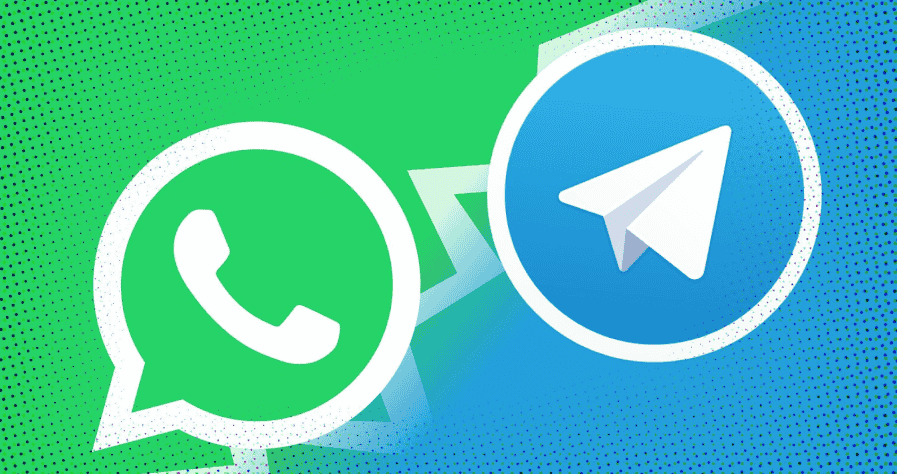Introduction
Instant messaging has become an integral part of digital communication, with apps like Telegram and WhatsApp leading the industry. While both platforms offer similar functionalities, they cater to different user preferences and security concerns. In this article, we will compare Telegram and WhatsApp, exploring their features, security measures, user experiences, and potential limitations.
In recent years, the competition between Telegram and WhatsApp has intensified as users become more conscious of privacy and security. Both apps have millions of active users, with WhatsApp boasting over 2 billion monthly users and Telegram steadily increasing its user base to more than 700 million. Understanding the differences between these two apps can help users choose the one that best suits their needs.
Overview of Telegram and WhatsApp
Telegram and WhatsApp are widely used messaging apps, each with a unique approach to user privacy and communication. Telegram offers a cloud-based system with multi-device access, while WhatsApp, owned by Meta, provides end-to-end encryption for individual chats. Some regions have even developed localized versions of these apps, such as the Telegram Chinese version, which adapts to local user needs.
WhatsApp, launched in 2009, quickly gained popularity due to its simple interface and reliable messaging service. Telegram, introduced in 2013 by Pavel and Nikolai Durov, differentiates itself with its focus on speed, security, and cloud-based storage. The battle between these two messaging giants continues as each platform introduces new features to attract and retain users.
Features and Functionality
Both Telegram and WhatsApp provide essential messaging features, including text chats, voice and video calls, and media sharing. However, Telegram stands out with its ability to support massive group chats of up to 200,000 members, secret chats with self-destructing messages, and the ability to edit sent messages. Additionally, Telegram bots offer automation capabilities that allow businesses and communities to manage tasks more efficiently.
WhatsApp, on the other hand, focuses on providing a seamless user experience. It supports group chats with up to 1,024 participants and has recently introduced Communities, which allow users to create sub-groups within a larger group. WhatsApp also offers status updates, a feature similar to Instagram Stories, where users can share text, images, or videos for 24 hours.
Another major difference is Telegram’s support for large file sharing. Telegram allows users to send files up to 2GB in size, whereas WhatsApp has a file limit of 2MB for documents and 16MB for media files. This makes Telegram a preferred choice for users who need to transfer large files regularly.
Security and Privacy Considerations
Security is a critical factor for messaging app users. WhatsApp employs default end-to-end encryption for messages, ensuring that only the sender and receiver can access the content. This encryption is based on the Signal protocol, which is widely recognized for its security standards. However, concerns about WhatsApp’s data-sharing policies with its parent company, Meta, have led some users to switch to Telegram.
Telegram, however, stores messages on its cloud servers by default, with the option to use secret chats for enhanced privacy. Unlike WhatsApp, Telegram does not offer end-to-end encryption for regular chats unless the user specifically enables secret chats. While this cloud-based approach allows users to access their messages across multiple devices, it raises concerns about potential data vulnerabilities.
Moreover, Telegram provides a unique feature called “self-destructing messages,” which automatically deletes messages after a specified time. This is particularly useful for users who prioritize privacy and do not want their messages to be stored permanently.
Web Access and Multi-Device Usage
Both Telegram and WhatsApp offer web versions for users who prefer desktop access. Telegram’s web version is more advanced, allowing users to remain logged in across multiple devices without requiring a phone connection. This is a major advantage for users who frequently switch between devices.
In contrast, WhatsApp Web requires a constant connection with the mobile device. If the phone is turned off or disconnected from the internet, WhatsApp Web becomes unusable. For users managing multiple accounts, features like WhatsApp web login provide a convenient way to stay connected, but they still face limitations compared to Telegram’s seamless multi-device functionality.
Additionally, Telegram’s web version allows users to search messages, access chat history, and download shared files more easily than WhatsApp Web. This makes Telegram a more convenient choice for users who rely heavily on desktop messaging.
User Experience and Interface
Telegram and WhatsApp offer clean and intuitive interfaces, making them easy to use even for non-tech-savvy individuals. Telegram provides extensive customization options, including themes, chat folders, and bot integrations. Users can modify their chat backgrounds, create animated stickers, and even schedule messages for later delivery.
WhatsApp, on the other hand, focuses on a minimalist design, ensuring a seamless user experience. While it does not offer as many customization options as Telegram, it compensates with its simple, easy-to-navigate interface. The app’s layout is designed to be user-friendly, with clear tabs for chats, calls, and status updates.
Furthermore, Telegram allows users to pin multiple chats at the top of their chat list, whereas WhatsApp only allows three pinned chats. This small but significant difference enhances usability, especially for those who frequently communicate with multiple contacts.
Availability and Regional Popularity
While both apps are globally available, their popularity varies by region. WhatsApp dominates markets in South America, India, and Europe, where it is the preferred messaging app for personal and business communication. Many businesses use WhatsApp Business to interact with customers, send automated messages, and provide customer support.
Telegram has a stronger presence in Russia, Iran, and parts of Asia, where its focus on privacy and lack of affiliation with large corporations make it a preferred choice. Governments and activists often use Telegram due to its ability to bypass censorship and provide secure communication channels.
Additionally, in regions where internet censorship is prevalent, Telegram’s ability to use proxy servers makes it more accessible than WhatsApp. This has contributed to its growing popularity among users who require unrestricted access to information and communication.
Endnote
Telegram and WhatsApp continue to be the go-to messaging platforms for millions of users worldwide. While WhatsApp excels in simplicity, security, and business integration, Telegram offers greater flexibility, cloud storage, and advanced features. Users should choose based on their specific needs, whether prioritizing privacy, multi-device access, or user experience.
Ultimately, both apps have their strengths and weaknesses, and their ongoing competition will drive further innovations in the messaging industry. As technology advances, we can expect even more robust features from both platforms, ensuring that users have the best possible communication experience.







